
 |
Tambomachay | Puca Pucara | Qenqo
Abelardo, our guide at Sacsayhuamán, found a taxi that would take us to each of these other sites near Cusco, wait for us to tour them, and then take us on to the next one, for a very reasonable fee. So we saw these smaller, yet still quite interesting, areas in style. Here is a map (from the back of our "Boleto Turistico") that can orient you to the locations of Cusco, the sites nearby, and the Sacred Valley. The small red dots indicate the sites we saw with Abelardo. Sacsayhuamán is the closest to Cusco, followed by Qenqo, then by Puca Pucara and Tambomachay. We did not visit Cusilluchayoc.

Here is our group walking over to the road after our tour of Sacsayhuamán, to where we thought we could find a taxi to get to the other sites. We didn't think walking to them was a very desirable option. Abel is in the rear.
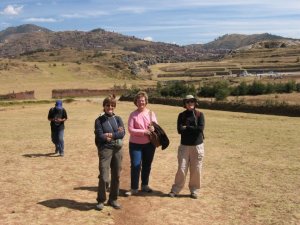
These are some scenic views taken from (left to right) Puca Pucara (2) and Tambomachay:
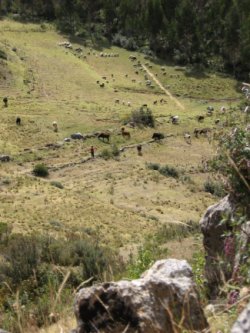 |
 |
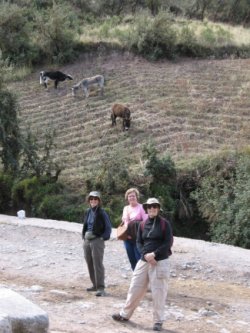 |
We started out with Tambomachay, the furthest site from Cusco. It was a relatively small, but very impressive structure, the highlight of which is a lovely set of water channels. Here is Henry climbing onto the long wall leading to the main section of the site, and our group beside the main fountain:
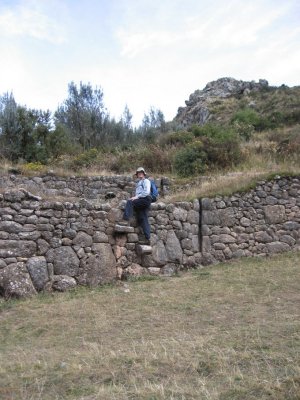 |
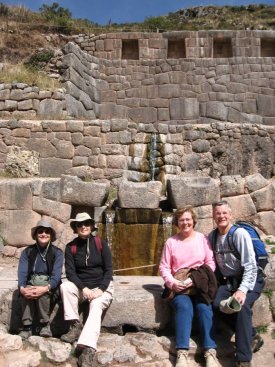 |
Below on the left you can see a panoramic view of the beautiful stonework that is Tambomachay. On the right is another highlight of the area, a bargain-hunter's paradise of a native market. We made several purchases here. Both of these pictures were taken from the hillside opposite the main structure.
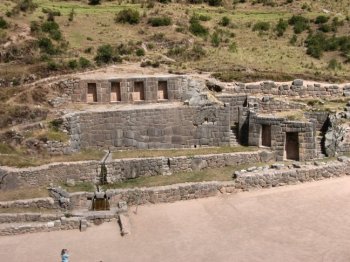 |
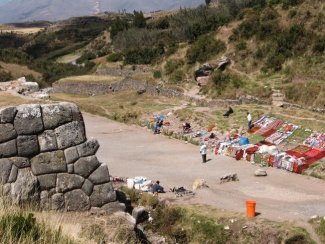 |
Puca Pucara is just down the road from Tambomachay and is not as well-preserved. Abel informed us that it was probably used as a military lookout headquarters, to protect Tambomachay. The latter was probably used either for sacred purposes, or at least as a stopping off place in the Sacred Valley by Inka nobility. Here are two pictures of one of the somewhat eroded, but still impressive, foundation walls of Puca Pucara:
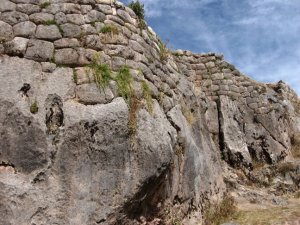 |
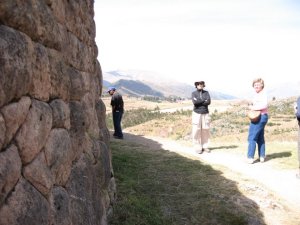 |
Here is Abel giving us some information about the walls, and a view of tourists through one of Puca Pucara's windows:
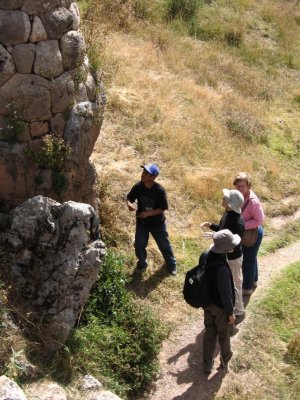 |
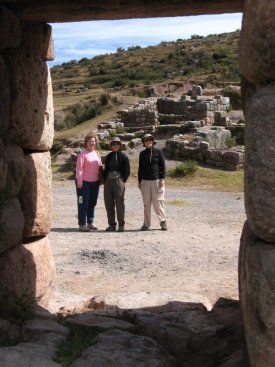 |
Two more views of Puca Pucara: one panoramic and one of a level area surrounded by walls, some containing niches.
 |
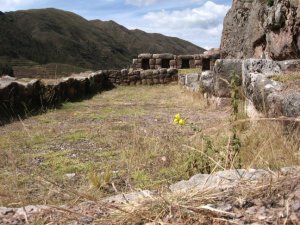 |
The last stop on our tour this day was Qenqo, which is located very close to Sacsayhuamán. It was probably the most varied and interesting of these minor sites. Here are three views of some of the intricate carvings, which Abel explained to us in great detail. Note the snake shape carved into the rock in the leftmost picture. It is a water channel whose flow was used for forecasting. In the center picture, you should be able to pick out a llama in profile. The shiny object is a coin Abel put there to help us gringos see the figure; it's where the llama's eye should be. The knobby protruding rocks in the picture at the right are supposed to represent the eyes of a puma, one of the Inkas' sacred animals.
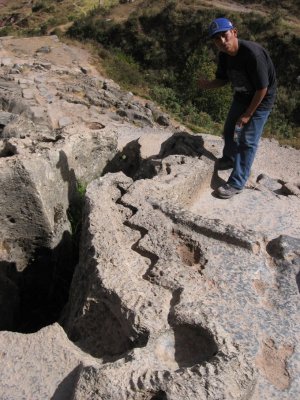 |
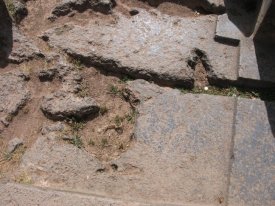 |
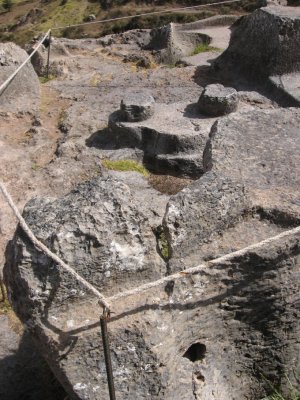 |
Here is another picture of some of the impressive stonework of Qenqo:

This site had a cave where archeolgists believe human sacrifices were carried out:
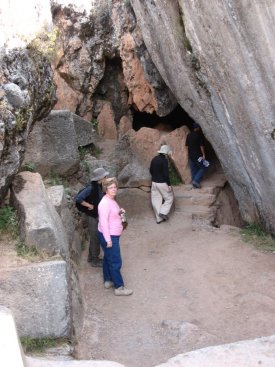 |
 |
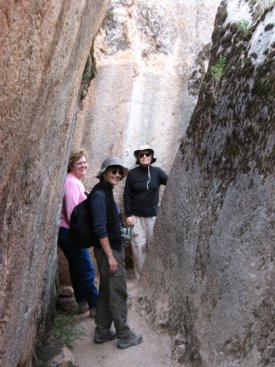 |
We finished up our tour of Cusco's archeological treasures with refreshing cups of coca tea at a restaurant near Sacsayhuamán that had more local color than any other we visited:
 |
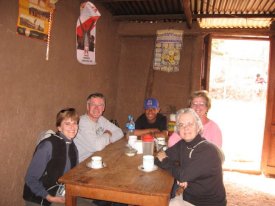 |
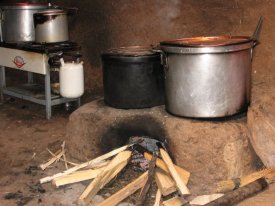 |
 Back to main page Back to main page |
Back to Cusco index page 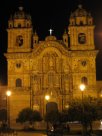 |
All photos, unless otherwise credited, are © by Henry J. Amen III. Please do not use without permission.